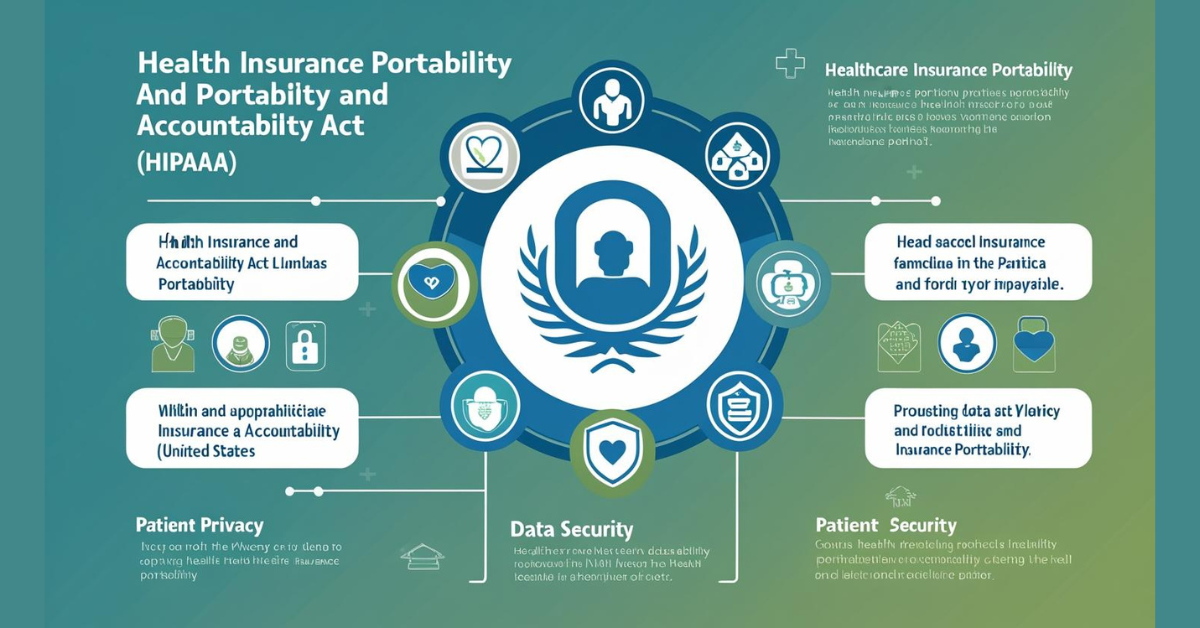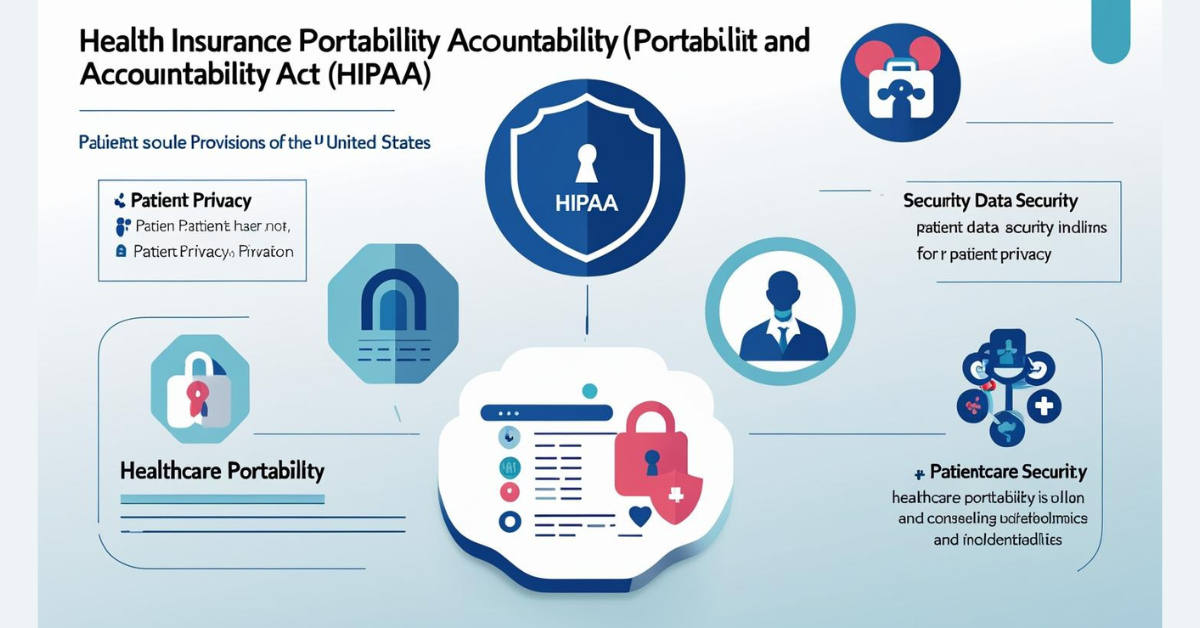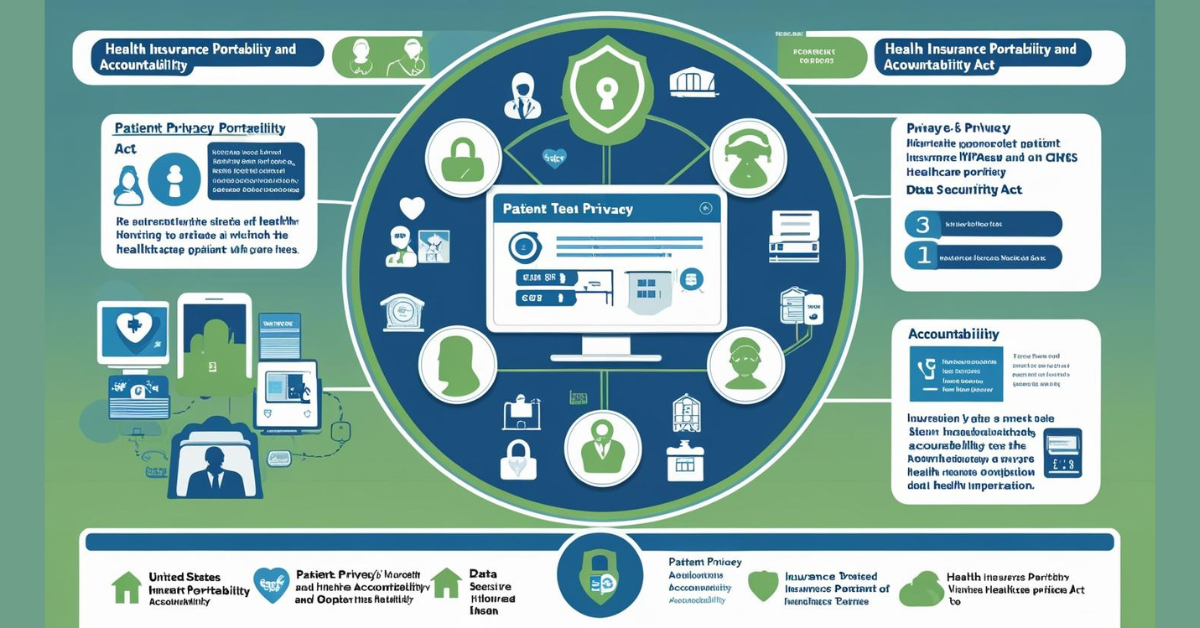What is Health Insurance Portability and Accountability Laws and Acts In US. HIPAA compliance is regulated by the Department of Health and Human Services (HHS) and enforced by the Office for Civil Rights (OCR). HIPAA compliance is a culture that healthcare organizations must implement to protect the privacy, security, and integrity of protected health information.
The Health Insurance Portability and Accountability Laws and Acts In US
The Health Insurance Portability and Accountability Act of 1996 (HIPAA) is a U.S. federal law that provides rights and protections to health insurance policyholders, particularly regarding the portability and renewable nature of coverage. It also includes administrative simplification provisions to improve the efficiency of the healthcare system.
Health Insurance Portability and Accountability
Act The HIPAA was enacted in 1996 to improve portability and continuity of health insurance coverage; combat waste, fraud, and abuse in health insurance and health-care delivery; promote the use of medical savings accounts; improve access to long-term care coverage and services; simplify the administration of health insurance; and protect individuals from wrongful disclosure of identifiable health information (HIPAA, 1996).
The privacy regulations extend coverage to all forms of personal records, require consent for routine use and disclosure of health records, protect against unauthorized use of medical records for employment purposes, and ensure that health-care providers have necessary information to treat their patients. The privacy and confidentiality regulations went into effect in 2003, with the primary purpose to improve efficiency and effectiveness of health-care systems by standardizing the electronic exchange of administrative and financial data (United States Department of Health and Human Services [USDHHS], 2003).
The privacy rule protects all identifiable health information or protected health information (PHI). PHI includes information that relates to an individual’s past, present, or future physical or mental health or condition; the provision of health care to the individual; or the past, present, or future payment for the provision of health care to the individual (USDHHS, 2015, pp. 1–2). Common examples of PHI are patient identifiers such as name, address, Social Security number, birth date, gender, insurance company name, and medical diagnosis.
A HIPAA violation occurs when PHI is inappropriately used or is disclosed to a person not involved in the patient’s care, to a person who does not require the information to provide care, or in a situation in which disclosure is not in the patient’s best interest (McGowan, 2012). Violations of HIPAA can result in substantial fines and prison sentences.
Patient Self-Determination Act
Congress passed the Patient Self-Determination Act (PSDA) in 1990 to ensure that health-care organizations inform patients about their rights and institutional policies to accept or refuse treatment and to prepare advance directives (Beauchamp & Childress, 2009). The basic premise of the PSDA is to promote patients as active participants in health-care decisions, thus increasing patient autonomy. The PSDA requires hospitals and other health-care agencies serving Medicare and Medicaid patients to develop and maintain written policies and procedures and to provide written information to adults receiving health care. Materials must describe the following:
- The individual’s right under the law to make decisions about medical care, including the right to accept or refuse medical and surgical treatment
- The individual’s right under state law to dictate advance directives such as living wills or durable power of attorney for health care.
- The policies and procedures that the institution has developed to honor these rights.
Institutions must specify how the advance directives are to be identified, recorded, and retrieved when needed. The legislation requires institutions to provide educational programs on advance directives for their staff and communities. The PDSA prohibits staff from conditioning the provision of care or discriminating against individuals in other ways because they do or do not have advance directives. Hospitals and nursing homes must provide all newly admitted patients with written information detailing these policies and procedures, and home health and hospice agencies must provide information when the individual begins to receive care from the agency (PSDA, 1990).
Safe Medical Devices Act
The Safe Medical Devices Act (SMDA) was enacted in 1990 to require health-care agencies to report to the Food and Drug Administration (FDA) serious injuries, illness, or death resulting from the use of a medical device (SMDA, 1990). A medical device is any medical product that is not absorbed in the body.
When a serious injury, illness, or death occurs, the SMDA requires health-care agencies to report to the FDA within 10 days of the event the following information: name, serial number, and model of the device; name and address of the manufacturer; and a brief description of the event. A nurse’s responsibility related to an incident involving a medical device covered under the SMDA includes the following (Brent, 2001):
- Discontinue the use of the device immediately.
- Follow your agency’s policies related to equipment use.
- Document the incident accurately in the medical record, on an incident report, and on any agency-specific forms.
- Record the identification number of the device in the medical record and other forms on a regular basis. Nurse leaders and managers are responsible for making certain that policies and procedures related to equipment use are in place. Further, should equipment malfunction, nurse leaders and managers must facilitate processes to sequester the equipment to ensure patient safety.
Good Samaritan Laws
All states have enacted Good Samaritan laws to encourage health-care professionals to render care in emergencies. Good Samaritan laws protect anyone who renders care during an emergency or disaster or at the scene of an accident as long as care is provided at the scene of the emergency, care is not grossly negligent, appropriate standards of care are used, and care is rendered without pay (Aiken, 2004).
Good Samaritan protection is necessary because, although many may feel a moral duty, health-care professionals are not legally obligated to render care to a stranger in an emergency. Good Samaritan laws vary from state to state, so nurses must become familiar with the law in their state.
Disclosure Statutes
Federal and state laws require disclosure of health-related information to appropriate government agencies to protect the public (Guido, 2010). Nurses as well as other health-care professionals must report suspected child neglect and suspected child abuse to the state-designated officials. Health-care providers are protected from liability if they report suspected child abuse or neglect in good faith but an investigation determines the report is groundless (Guido, 2010).
Conversely, failure to report suspected child abuse or neglect could result in liability. Some states also require mandatory reporting of suspected abuse of dependent adults and older adults. Nurses should check their state laws to know the mandatory disclosure requirements. Additionally, some communicable diseases and sexually transmitted diseases must be reported to local or state public health officials.
Health-care workers should follow their agency’s policies and reporting procedures. In a community setting, it is critical that information is reported to the proper agency. A list of reportable dis eases is updated annually and is available through the Centers for Disease Control National Notifiable Diseases Surveillance System at wwwn.cdc.gov/nndss.
Employment Laws
Federal and state governments are responsible to enact laws that protect employees from unfair treatment, discrimination, and unsafe work conditions. Because nurses make up the largest labor force in the health-care industry, nurse leaders and managers must keep up to date concerning the laws and regulations that are aimed at protecting the nursing workforce.
Classifications of Law
In the United States, the major classifications of law that apply to nursing practice are contract law, criminal law, and civil law. A voluntary agreement between or among two or more competent people is the basis for contract law. The contract creates an obligation for a person to do or not to do something and creates enforceable rights or legal duties (e.g., an employer employee agreement) (Brent, 2001). Criminal law relates to conduct that is harmful to society as a whole as well as to an individual victim.
Crimes are classified as either a misdemeanor, which is punishable by fines or imprisonment for less than 1 year, or a felony, a more serious offense punishable by imprisonment for more than 1 year or death. Examples of misdemeanors in health care include a nurse failing to report suspected child abuse or dependent adult abuse (Allen, 2013) or an individual using the title “nurse” or “registered nurse” without being duly licensed or certified.
Examples of felonies in health care include some HIPAA violations and diversion of controlled substances from a health-care facility. In addition, some violations of the state NPA can be charged as a felony (e.g., using or attempting to use a nursing license that has been suspended or revoked). Civil law pertains to the rights and duties of private citizens and is enforced through the courts as damages or monetary compensation. Tort law is the foundation of civil law and is the most common type of law that affects health-care professionals (Guido, 2010).
A tort is a civil wrong committed against another person or a person’s property and includes personal injury inflicted on another through actions of commission or omission. The law allows the injured person to seek monetary compensation for injuries at the expense of the wrongdoer (Brent, 2001). The three types of torts are as follows:
- Intentional torts: Willful acts that are intentional and cause injury. An intentional tort is a direct violation of a person’s legal rights and includes assault, battery, false imprisonment, and fraud.
- Quasi-intentional torts: Willful acts that cause injury but are unintentional torts. A quasi-intentional tort typically involves communication issues that result in defamation of character, violation of personal privacy, or breach of confidentiality (Aiken, 2004).
- Unintentional torts: Careless acts or accidents that cause injury. Negligence and malpractice are examples of unintentional torts.
- Summarize the three types of torts as they relate to nursing practice.
Read More:
https://nurseseducator.com/didactic-and-dialectic-teaching-rationale-for-team-based-learning/
https://nurseseducator.com/high-fidelity-simulation-use-in-nursing-education/
First NCLEX Exam Center In Pakistan From Lahore (Mall of Lahore) to the Global Nursing
Categories of Journals: W, X, Y and Z Category Journal In Nursing Education
AI in Healthcare Content Creation: A Double-Edged Sword and Scary
Social Links:
https://www.facebook.com/nurseseducator/
https://www.instagram.com/nurseseducator/
https://www.pinterest.com/NursesEducator/
https://www.linkedin.com/in/nurseseducator/
https://www.researchgate.net/profile/Afza-Lal-Din
https://scholar.google.com/citations?hl=en&user=F0XY9vQAAAAJ



I love the efforts you have put in this, thanks for all the great blog posts.